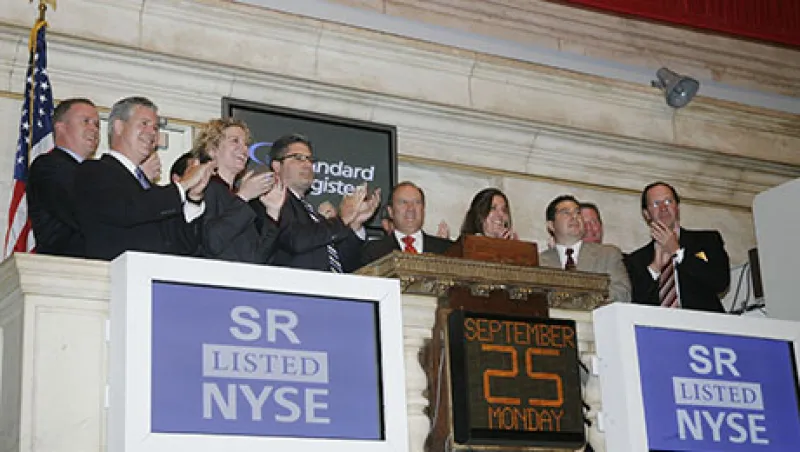With the financial crisis firmly behind them, many U.S. companies have shifted their focus from survival to growth. That often means pursuing traditional paths, such as winning more business from present customers and exploring new markets. Indeed, these two strategies ranked high in the 2014 CFO Outlook survey conducted by Bank of America Merrill Lynch. Of the CFOs surveyed who expect their companies to grow this year, 82 percent predicted deeper market penetration, whereas 77 percent anticipated market expansion.
Given the recovering economy, an increasingly attractive option for middle-market firms is mergers and acquisitions. The Bank of America Merrill Lynch survey revealed that 1 in 4 CFOs is considering M&A as a means of growth. Although that strategy is often viewed as aggressive and requiring significant financial strength, more and more privately held firms are finding themselves in a position to make such a move.
So far in 2014 there has been a notable uptick in M&A transactions, and conditions are ripe for that trend to continue. Detractors may point to last year, when there was also a flurry of activity in the first quarter — Dell’s $24.4 billion deal is a well-known example — only to slow during the following months. Such a swoon seems less likely this year, however. M&A activity is above levels seen in 2007, pre–financial crisis. Many companies continue to have healthy balance sheets at a time when interest rates remain relatively low. With each passing month, more middle-market firms recognize that low interest rates are not about to skyrocket. That, in turn, makes executive leadership more comfortable with taking decisive action.
In short, a deal that stalled two or three years ago may now have fresh life, with acquisition financing available at historically attractive terms. Compared with more steady organic growth, M&A is often a catalyst for firms’ expansion that also generates investor applause.
As more mid-market companies explore M&A possibilities, financial officers need to take a close look at how a merger could potentially benefit the company and its shareholders, such as:
• Management and ownership. Selling a business can help resolve issues related to management succession and ownership, whether the owners are family members with diverging interests or partners dealing with intracompany tensions.
• Savings. Consolidating operations and reducing overhead are common justifications for M&A, which can also give the new, larger company more purchasing and bargaining power in the market. Such operational efficiencies also can trim excess capacity, helping boost margins.
• New business model. M&A can allow companies to diversify products and provide access to new customers. If a company is already involved in several industries or markets, it may be more attractive as an acquisition target, especially if competitors are consolidating and there’s a need to maintain scale and negotiating power with vendors.
• Revenues. M&A can be an option for companies with limited organic growth opportunities, especially if a company has the desire but not the means to expand internationally. Consolidation also can help increase volumes and pricing power for businesses that may have plateaued.
• Capital structure. A company with significant leverage and looming maturities relative to peers may see M&A as an attractive strategic alternative. A sale at a compelling valuation could be more desirable than refinancing.
Recent transactions help illustrate the benefits of M&A for middle-market companies. With Bank of America Merrill Lynch as its adviser, Bellevue, Washington–based Tri Marine, a major supplier and distributor of tuna, last year agreed to sell a minority stake to Bolton Group International, an Italian consumer products company with headquarters in Milan.
The deal provided funding for Tri Marine, which is seeking to develop diversified sources of fish supply from sustainable fishing grounds. For Bolton, the transaction strengthened its supply chain and opened a new avenue for growth outside of its core European market.
In another recent deal, Dayton, Ohio–based Standard Register acquired printing and document management company WorkflowOne. Standard Register, which provides large health care and commercial organizations with communications and marketing services, said the transaction would boost revenues and yield $40 million in annual cost savings. The acquisition is also expected to increase its customer base, which is crucial as the 102-year-old company shifts from traditional printing to digital and web-based marketing. In addition, the deal allowed Standard Register to reduce its number of lenders and complete an early renewal and expansion of its credit facility, which increased liquidity and enhanced the company’s ability to capitalize on additional growth opportunities.
Organic growth is understandably a popular path that often comes with less risk. But as these deals show, M&A is a viable choice for companies eager to take advantage of favorable market conditions to combine with competitors, complementary businesses or other strategic fits. With knowledgeable and insightful counsel from the right financial adviser, M&A can yield significant benefits for companies eager to jump to a higher level.
Alastair Borthwick is head of global commercial banking, and James Rourke is managing director, mergers and acquisitions, investment banking, at Bank of America Merrill Lynch.




